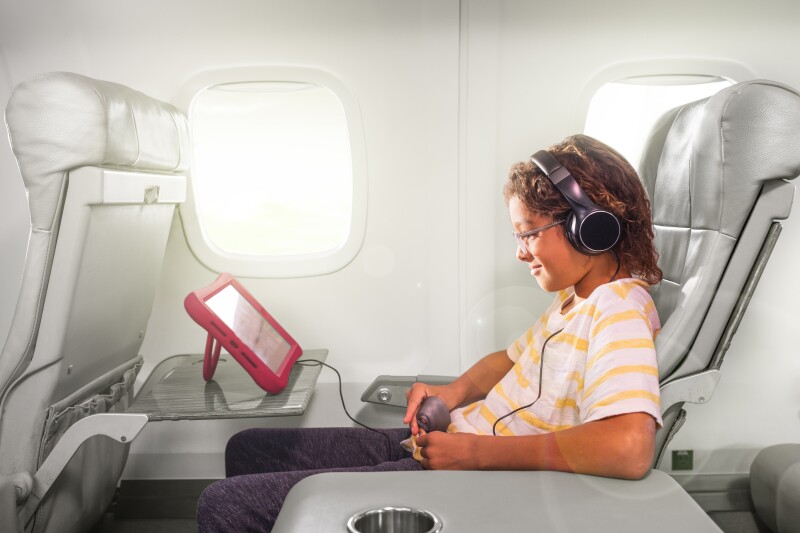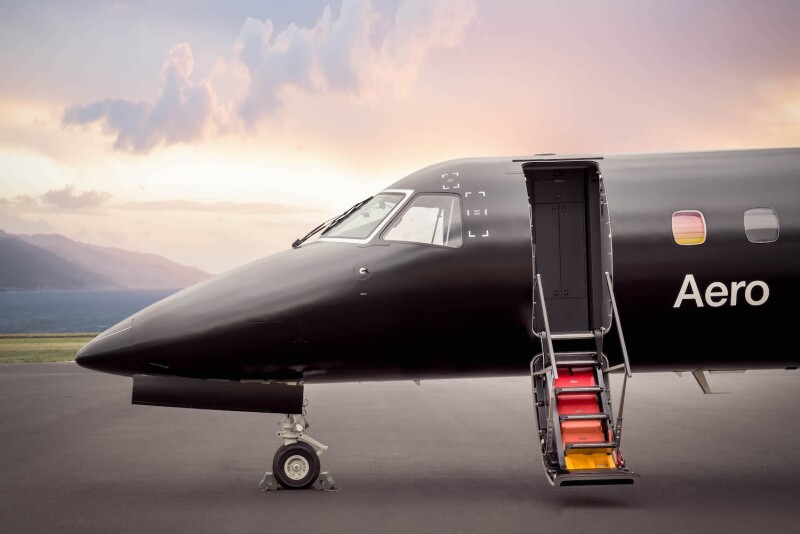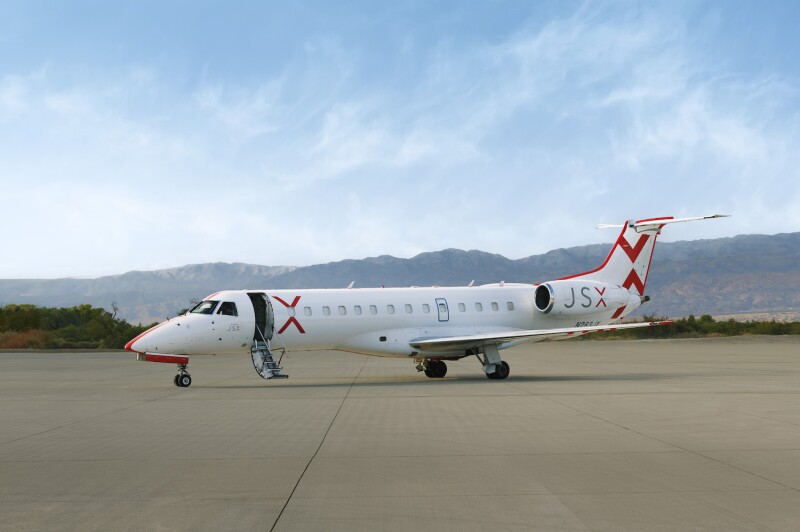The past year hasn’t exactly been a glowing advertisement for flying commercial. Fliers have faced a surge in delayed and canceled flights, security line bottlenecks at the country’s airports, and a lost luggage epidemic as the airlines have struggled to meet the pent-up demand for travel.
What’s worse, travelers are paying more for this subpar experience. Domestic and international airfares keep ticking upward due to a combination of increased demand, inflation, rising fuel costs, aircraft delivery delays, and ongoing staffing shortages. And the high cost of commercial air travel doesn’t appear to be coming down anytime soon.
There has got be a better way, right? Turns out, there kind of is.
What it’s like to fly semi-private
With the chaos at the country’s airports having intensified my craving for a calmer and less crowded flying journey, in March, I decided to experience a very, very different kind of air travel. I took a short, one-hour flight from Northern California down to Orange County, in Southern California, with semi-private air carrier JSX together with my four-year-old daughter.
Compared to some of our recent commercial air travel journeys (let’s see, there was the Chicago layover that was inexplicably added to our “nonstop” flight between San Francisco and Raleigh, plus the Thanksgiving day security line that ran the entire length of the terminal), the experience was night and day. It was, dare I say, even downright peaceful and relaxing?
We flew out of the JSX terminal in Concord, a tiny airport about 45 minutes east of San Francisco that also happens to be in the same city where I live (so of course I’m a bit biased about this amazing location). I picked my daughter up from preschool literally 45 minutes before our flight. After a quick check-in (which also served as a security and I.D. check) with no one ahead of us, we dropped off our checked bags and made ourselves at home in the temporary waiting area. (The Concord airport is in the midst of being renovated so the JSX “terminal” is currently a mobile unit.)
We waited in the simple but pleasant lounge area that was outfitted with a smattering of sleek couches, coffee tables, communal work tables, and armchairs with access to complimentary coffee, tea, and water. There were about two dozen fellow passengers sitting quietly, reading or working. There were no constant loud announcements over the P.A. system, and no lines or crowds of any kind. It was so quiet. So civilized.

JSX lounges are typically outfitted with a small refreshment area where coffee, tea, and water are available.
Photo by Michelle Baran
Once it was time to board, we walked straight through the security scanners without removing a thing (part of the carrier’s unique, TSA-approved security process), and out onto the airfield. We then climbed the steps onto the smaller aircraft feeling briefly like the movie stars we imagine ourselves to be.
The 30-passenger plane (in a two-one seat configuration) didn’t have seatback screens, but we came prepared with headphones and an iPad loaded with some favorite TV shows (for the four year old) and a book (for her mom).
JSX is currently equipping its entire fleet with Starlink Wi-Fi. While my daughter and I just narrowly missed out on trying the new Wi-Fi (it hadn’t been installed on our specific aircraft yet), AFAR contributor Chris Dong experienced the Starlink connectivity on a recent JSX flight and was very impressed. “The Wi-Fi worked incredibly well, with almost no lag or latency. JSX even allows those on board to take Zoom calls, for better or worse. I tried out the video calling feature and it was just as fast as if I was on the ground,” says Dong.

JSX flights now feature Starlink Wi-Fi on board.
Courtesy of JSX
Our short flight included gourmet snacks and drinks (sparkling rosé wine and trail mix among them). Once we landed, we grabbed our luggage right outside the aircraft and were on our way.
Our return flight from Orange County was just as seamless. Again, check-in was a breeze, the small lounge area was quiet and uncrowded, and we boarded and disembarked without incident.
It was, honestly, kind of a game changer, especially considering that some JSX flights are similar in price or just slightly more than the same flights on commercial carriers. (One-way flights from Concord to Orange County, California, start at $209.) Interested? Here’s everything you need to know about flying semi-private, including the pros, cons, and some of the companies that offer this unique air travel experience.
What is semi-private air travel?
Private jets are sleek, smaller aircraft that offer ultimate privacy and exclusivity in the skies—for a steep price. Private jets typically range from smaller 4-person aircraft to slightly larger 20-passenger planes; it costs between $1,300 and $3,000 per flying hour to charter a 4-to-6-passenger private jet and goes up from there.
But there is actually something between that extreme level of air travel luxury and flying with the masses on 100- to 300-passenger commercial aircraft. Enter: the semi-private jet experience.
Semi-private air travel is typically offered on smaller 15- to 30-person planes (or even helicopters) flying domestic routes—though some fly international routes as well. Airlines that offer this service typically sell individual seats on these smaller aircraft that can be booked online, just as you would book with a major carrier.
How much does semi-private air travel cost?
Because passengers are not chartering the entire aircraft the way they would when booking a private jet, pricing ranges from something that would be comparable to commercial air travel (JSX flights, for instance, start at $209 each way for interstate flights, and from $669 each way for longer flights from New York to Florida) to something more in line with business- or first-class pricing (Aero flights from Los Angeles to Los Cabos start at $1,800 one way).
Can kids and pets fly semi-private?
In short, yes. I was a little apprehensive about traveling with my four-year-old daughter on JSX not least because the whole experience is so quiet and calm and small kids can be chaos. But there was another young boy on our first flight and a baby on our return flight, so we were not the only traveling family on board. Kids under two can typically travel as a lap child, and those over two years of age will need their own seat.
As for pets, check with each carrier for its specific pet policy, but typically small or medium-size pets are allowed to travel in the cabin free of charge.
Companies that offer semi-private flights

Launched in 2020, Aero flies to snow- and sun-filled destinations.
Courtesy of Aero
Aero
Launched in 2020, the semi-private, luxury airline Aero offers a slightly more elevated product than JSX, at more elevated prices. One-way flights from Dallas to Aspen start at $1,000, one-way flights from L.A. to Los Cabos start at $1,800, and one-way flights from London to Nice start at $1,600. Prices include one checked luggage and one carry-on, and drinks and snacks on board. Kids (including infants) and small pets are welcome.
Aero flies from Aspen, Colorado; Jackson Hole, Wyoming; Las Vegas; Los Angeles; Los Cabos, Mexico; San Francisco; and Sun Valley, Idaho. It also flies between some European hubs, including London; Nice, France; and Ibiza, Spain.
Blade
Blade, a helicopter and semi-private flight service, predominantly operates flights from New York City to Palm Beach and Miami, Florida, and also offers helicopter service from Manhattan to John F. Kennedy International Airport and Newark International Airport. One-way flights to to Palm Beach start at $1,250.

JSX flies 30-passenger Embraer E135 aircraft.
Courtesy of JSX
JSX
Formerly JetSuiteX, JSX launched in 2016. Current JSX routes connect several California hubs, including Burbank, Concord, Los Angeles, Monterey, Orange County, Oakland, and San Diego. The airline also flies to Austin, Dallas, Denver, Gunnison/Crested Butte (Colorado), Houston, Las Vegas, Miami, Orlando, Phoenix, Reno-Tahoe, Taos (New Mexico), and Westchester County in New York.
JSX is by far one of the most affordable options for semi-private travel, with one-way fares starting as low as $209 on 30-seat planes, which includes up to two checked bags as well as snacks and drinks on board. Kids (including infants) and pets are welcome to fly.
The carrier recommends arriving 30 minutes before your flight is scheduled to take off. The waiting lounges, which are typically in their own terminal apart from the main airport, are Wi-Fi equipped and have coffee, tea, water, and restrooms available for passengers. (If you want something more substantial to eat, you’ll need to bring your own food or eat before or after travel.)
JSX predominantly flies the Embraer E135 aircraft, a shorter version of the more common Embraer E145 aircraft operated by many U.S. regional airlines. The planes are outfitted with cushy leather seats and tray tables and now all have Starlink Wi-Fi service.
Surf Air
Surf Air is a jet membership service that incudes both scheduled semi-private flights (such as JSX flights) and on-demand jet service. The semi-private scheduled flights operate from Truckee, San Carlos, Santa Barbara, and Hawthorne in California, and the on-demand flights can be booked to and from hundreds of hubs all across the United States. Memberships range from $199 per month to access the inventory then pay per flight to $2,500 per month to unlock an unlimited flight plan.
Tradewind Aviation
Semi-private travel is not a new concept, at least not according to the 20-year-old Tradewind Aviation. The Oxford, Connecticut–based company operates on-demand and scheduled flights throughout the United States and Caribbean.
Scheduled service includes flights to and from Westchester County in New York; Nantucket and Martha’s Vineyard in Massachusetts; and Newport, Rhode Island. Tradewind also flies between the Caribbean destinations of Anguilla, Antigua, San Juan, St. Bart’s, and St. Thomas.
Flights run anywhere from $300 to hop between Caribbean islands to an opening rate of $395 to fly to Nantucket from Westchester. The aircraft fly out of private air terminals and flights include on-board refreshments.
The benefits of flying semi-private
No crowds or long security lines. There are few things more disheartening than arriving at the airport—even with plenty of time before your flight—only to see a line of people snaking through security. With a limited number of routes on smaller aircraft, the crowds and lines are basically non-existent when flying semi-private.
No need to arrive at the airport two hours early. As a lifetime member of #teamearly when it comes airport arrival, this was difficult for me to take to heart. But you actually can show up 30 minutes before your flight, as per the carrier’s recommendation, because the security process is so much quicker—and there are fewer people and lines to contend with.
Great customer service. With fewer fliers and a higher price point, semi-private airlines offer higher-touch service. From a seamless check-in process to valet parking and concierge services, the customer approach is more personalized, attentive, and well above what you would expect on many commercial flights.
The (potential) drawbacks of flying semi-private
The cost. While there are actually some pretty great deals to be found in the semi-private flight space, the flights will typically cost more than the commercial counterpart. However, there is a lot to be said for what these flights can save you in terms of time and frustration. Also, be sure to do all the math regarding any additional fees you might pay on a commercial flight (e.g., for baggage) to see how a semi-private flight stacks up.
No shops or restaurants. Since the flights take off and land at independent terminals, you won’t have access to the shops and restaurants you find in the main terminals. The lounge might offer some drinks or snacks, but that’s it. So be prepared with your own provisions and your own way to pass the time (reading, working, scrolling, etc.).
Limited flight schedule. Probably the biggest drawback is the limited availability of these services. These flights typically serve very specific leisure travel destinations. For many travelers, they might not be an option because they simply don’t fly to or from where you need to go.
Parking. This can actually be a pro or con depending on the airport or terminal you are flying into or out of. In some cases, if the semi-private carrier is flying out of a smaller, less crowded airport or terminal, parking might be easy compared to a larger airport. But, for instance, JSX only offers valet parking at some of its terminals, which means that parking can get very expensive. In those cases you might be better off taking a car service.
This story was originally published in January 2022 and was updated on April 20, 2023, to include current information.








